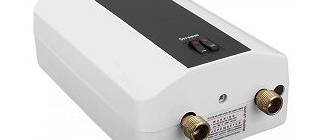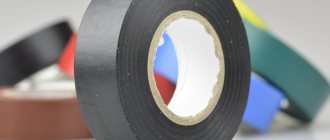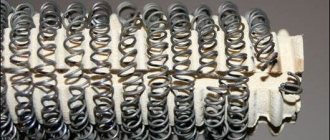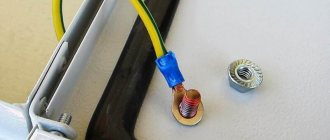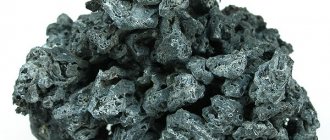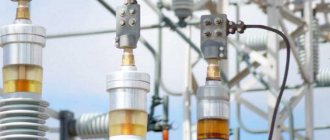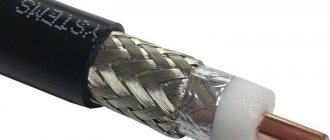Any electrical equipment, including generators, power plants and switchgear, consists of live parts. For reliable and safe operation, the latter must be protected from each other and from the influence of surrounding components. Electrical insulating materials are used for these purposes.
It is important that the winding on the armature is separated from its core, the excitation coil from a similar part, poles and frame of the unit. Materials that are used to insulate something from electrical current are called dielectrics. It is worth noting that such products come in two types - some do not pass current at all, others - although they do this, but in tiny quantities.
When creating such materials, organic and inorganic elements are used, along with various additives necessary for impregnation and gluing. Recently, liquid insulation for wires, often used in switches and transformers (for example, transformer oil), has been gaining widespread popularity. No less often, gaseous dielectrics, including ordinary air, are used in electrical equipment.
Electrical insulation
It is a layer of material that is not capable of conducting electricity, or, in other words, a dielectric. A metal conductor coated with such material is reliably protected from contact with another conductor, and is also not capable of causing damage to the person working with it.
The following dielectrics act as insulating materials: glass, ceramics, various types of polymers, mica. One type of insulation is air insulation. Its design is notable for the fact that the conductor cores are located in space in such a way that there is a layer of air between them, which limits their contact.
Historically, the first insulation samples were made from paraffin-impregnated paper or rubber wound around copper wires. Today, rubber is used for wires and cables operating under conditions of large temperature changes.
The service life of the insulation is highly dependent on the temperature of the working environment. An excess of a few degrees is enough to reduce the service life of the insulation material by approximately half.
Electrical insulating materials and their applications
Electrical insulating materials are widely used in industry, radio and instrument making, and the development of electrical networks. The normal operation of an electrical device or the safety of the power supply circuit largely depends on the dielectrics used. Certain parameters of a material intended for electrical insulation determine its quality and capabilities.
The use of insulating materials is subject to safety regulations. The integrity of the insulation is the key to safe work with electric current. It is very dangerous to use devices with damaged insulation. Even a small electrical current can have an effect on the human body.
Characteristics of electrical insulators
All electrical insulators without exception are subject to general requirements.
Electric strength
Methods of fire protection of electrical communications
The main task of the dielectric is to provide the required level of the electrical breakdown strength value. This value is directly dependent on how thick the porcelain wall of the insulator is. Strength failure occurs when a solid dielectric breaks down or as a result of a discharge along the surface of an insulator. Strength is characterized by the industrial frequency voltage that the insulator can withstand on a dry and wet surface, as well as by the pulse voltage during testing. This value is checked with a special device - a megohmmeter.
Resistivity
The insulating material allows a small portion of the electrical current to pass through. This value is disproportionately small in comparison with the currents that constantly flow through the veins. Electric current can flow through two paths: through the insulating material itself or along its surface. Specific resistance is the value of resistance per unit volume of a material. It is equal to the ratio of the products of the resistance values of the current flowing through the insulator and through it to their sum.
As a unit of measurement for this quantity, we took the resistance value of an insulating material made in the shape of a cube with a side of 1 cm, where the direction of the current coincides with the direction vector of the two outer opposite faces. The value of resistivity depends on the state of aggregation of the material and other important quantities.
The dielectric constant
After placing the insulator in an electromagnetic field, the direction in space of particles with positive charges changes: they line up along the lines of force of the electromagnetic field. The electron shells change their orientation in the opposite direction. The molecules become polarized. When dielectrics are polarized, molecules form their own field, which acts in the direction opposite to the direction of the general field. This ability is determined by the dielectric constant.
Important! Dielectric constant characterizes the degree of polarization of the dielectric. It affects the capacitance of elements such as capacitors. In their manufacture, insulation with a high dielectric constant should be used. The value is measured in farads per linear meter (F/m). The unit of measurement got its name in honor of the great English scientist Michael Faraday, who made a significant contribution to science in the field of electromagnetism.
Dielectric loss angle
Dielectric loss is the electric field energy dissipated in an insulating material over a certain unit of time. Energy does not disappear anywhere, but moves from one state to another (heat). The higher the loss, the greater the risk of thermal destruction of the dielectric. This characteristic of an electrically insulating material is measured by the dielectric loss tangent. The dependence of the tangent of the angle on the value of dielectric losses is linear.
What problems does thermal insulation material solve?
Thermal insulation is one of the priority areas in construction, since its use can greatly improve the performance characteristics of buildings. A building with a sufficient amount of insulation freezes much less in winter, which reduces the cost of heating it. It is also less prone to overheating in the summer, maintaining a comfortable temperature inside, which saves the life of air conditioning equipment.
The presence of thermal insulation makes it possible to avoid sudden changes in temperature in the room. This is very important if finishing materials sensitive to this parameter are used indoors, for example, wood or certain types of plastic, including PVC used for the production of suspended ceilings. The absence of significant temperature fluctuations makes it possible to eliminate favorable conditions for condensation formation. It is the use of thermal insulation that eliminates the appearance of dampness and mold development. Of course, provided that moisture does not form too intensively inside the room from other factors or accumulates as a result of the lack of waterproofing between the foundation and the facade walls.
Dampness on the walls leads to peeling of finishing materials. As a result, wallpaper and heavy ceramic tiles are torn off. Excess moisture from the lack of sufficient thermal insulation also leads to expansion of wood products. As a result, there is warping of the floor covering, deformation of the doors, causing them to fit loosely into the door frame, and so on.
It is also worth noting that heat-insulating materials, in addition to their intended purpose, have sound-proofing properties. Of course, their efficiency is not as high as that of coatings specialized for this purpose, but it is quite sufficient to reduce the transmission of loud sounds.
Thermal insulation materials used
There is a fairly wide range of materials offered on the market that can be used as successful insulation. Among them, the optimal balance between cost and efficiency is:
- Mineral wool.
- Styrofoam.
- Expanded polystyrene.
- Penoplex.
- Foamed polyethylene foam.
- Polyurethane foam.
Areas of application of electrical insulators
High-voltage wires - device and application
To find out where electrical insulators are used, just remember where electrical wiring is common. These can be both domestic power supply and electric lighting systems, and industrial ones. Electrical power cables laid outdoors and underground contain several layers of such insulation. In instrument making, individual design elements of devices also have to be isolated from voltage. These can be either small elements of different boards or entire units. Such insulation allows you to maintain the performance characteristics of materials located near current-carrying conductors.
Liquid dielectrics
Liquid insulation
Which fire extinguisher should not extinguish live electrical wiring?
This type of dielectric includes various types of oils, varnishes, pastes and resins. Petroleum products – mineral oils – are widely used. Such insulators are used in low-power transformer substations, oil switches, cables and capacitors. Liquid insulation for wires is used in preparing cables and capacitors for operation.
The note. As an alternative to liquid insulation, you can use wire spray. Distilled water is also a dielectric.
The technical characteristics of liquid dielectrics directly depend on their purity. The more contaminated oil, water and other similar dielectric fluids are, the worse their performance is. The purification of such liquids is carried out using distillation or ion exchange sorption.
Asbestos materials
Asbestos is a natural mineral that has a fibrous structure. A qualitative indicator of asbestos is its high heat resistance (300 – 400°C) and low thermal conductivity. Materials are made from asbestos in the form of sheets of different thicknesses in the form of ropes of different diameters and asbestos fabrics. Asbestos has poor electrical insulating properties (dielectric strength 0.6 - 1.2 kV/mm). Most often, asbestos is used as a heat insulator. It is used as an electrical insulator only in low-voltage installations.
Solid dielectrics
Solid insulation
This is the most common and popular group of electrical insulating materials. Such insulators include:
- Glasses made from inorganic substances.
- Installation and capacitor ceramics.
- Muscovite, phlogopite.
- Asbestos.
- Films made of inorganic materials.
In addition, solid insulators are divided into polar, non-polar and ferroelectric. The criterion for separation is the degree of polarization. The main properties of solid insulators also include their chemical resistance, tracking resistance and dendrite resistance. The first quality characterizes the material’s ability to withstand aggressive chemical environments, such as acids and alkalis. Tracking resistance is the ability to withstand the effects of an electric arc. Dendritic resistance characterizes resistance to the appearance of dendrites. Dendrite is a product of the sediment of particles in an electrolyte, obtained when exposed to high-density electric current.
In addition to all this, the wires also protect against electromagnetic interference. As such protection, foil, spiral winding, and core braiding are used.
Soundproofing
Soundproofing and soundproofing protect the room from noise penetrating into a residential building from the outside. They are necessary both during the construction of a private house and during independent major renovations of an apartment. Modern films are divided into:
- Acoustic;
- Sound-padding.
The key difference between them is their purpose. Acoustic ones help improve audibility inside a particular room, and cushioning ones eliminate the problem of street noise from cars, etc. Such properties are ensured by a certain texture and design of the slabs. They can be presented in the form of mineral wool or foam plastic, where, on the one hand, there is a soft structure, and on the other, a hard reflective sheet (for example, aluminum or asbestos-cement). Polymer films that have a membrane structure are also now being produced. They are known for their combined properties due to a soft inner layer and a porous outer layer, which absorb sound from the room and reflect frequencies from the street.
Gaseous dielectrics
These types of insulation can be divided into two large groups: materials of natural origin and artificial. Ordinary air inhaled by humans is a natural insulating material; various gases are classified as artificial. Air is not suitable for use in hermetically sealed equipment enclosures due to the high percentage of oxygen it contains. Electrical gas will be relevant for such installations. Gaseous electrical insulating materials have a dielectric constant value of 1. The advantages of this group of dielectrics are the small amount of dielectric losses and the degree of breakdown.
Types and purpose
Insulating protective materials are used to protect residential and industrial premises from the negative effects of the environment. Their application depends on the type of coating. The following types of insulation exist:
- Heat, wind, sound insulation;
- Hydro- and vapor barrier;
- Electrical insulating and vibration insulating materials.
In addition to this classification, there is also a division of coatings depending on their shape. There are liquid, dense and powder options. Let's take a closer look at each of them.
Photo - insulators for pipelines
Inorganic dielectrics
This type of insulation mainly includes substances whose chemical formula does not contain organic elements. The most common electrical insulating materials of this kind include the following series: glass and its varieties, mica, ceramic materials such as steatite, radio porcelain, thermocond. Glass derivatives are used to make various glass tubes and cylinders. Porcelain insulation is often used to create capacitors and resistors.
Ceramic insulation materials
Porcelain
Porcelain or so-called electrical ceramics . It has such properties as heat resistance (150–170°C), dielectric strength (20–28 kV/mm), high mechanical strength, resistance to water penetration (does not absorb water), and is resistant to aggressive environments and radiation. Electrical ceramics are used in such industries as electrical engineering, electronics, automation and telemechanics, and computer technology. Various insulators and insulating rods are made from electrical porcelain.
Steatite
Soapstone is a ceramic material. Has high dielectric strength (30-50 kV/mm). Due to its good dielectric properties, soapstone is used for the manufacture of critical insulators and insulating units.
Classification by heat resistance
Below in the article, data on heat resistance classes of dielectrics are given, taken from GOST 8865-93 “Electrical insulation systems”, clause 2 2.1, table No. 1:
- Y – materials made from paper, cardboard, cellulose, silk, and various fibrous materials not immersed in a liquid dielectric. The temperature that the insulation can withstand is 90°C.
- A - includes materials of the previous class, as well as artificial silk, which are impregnated with oil and other varnishes. The temperature that the insulation can withstand is 105°C.
- E – these are synthetic and organic films, resins, compounds. The temperature that the insulation can withstand is 120°C.
- B – the insulator is based on mica, asbestos, fiberglass, which were made using organic binders of normal heat resistance. The temperature that such material can withstand is 130°C.
- F – the insulator is based on mica, asbestos, fiberglass, which are impregnated with resins and varnishes of appropriate heat resistance. The insulator can withstand heating up to 155°C.
- H – the insulator is based on mica, asbestos, fiberglass, which are used with organosilicon binders and impregnations. The fabric is characterized by high temperature resistance - up to 180°C.
- C – the insulator is based on mica, asbestos, fiberglass, which are used without any binders of organic origin. The most temperature resistant among insulating materials – up to 180°C.
Thermal insulation: some features
This term refers to building materials whose function is to reduce the possibility of heat transfer. In addition, this name may also refer to special structures created for the same purposes, or to a combination of a number of measures aimed at constructing a heat-insulating layer.
Thermal insulation, as mentioned above, has several types, which are classified into different groups according to the method of functioning. This:
Scheme of roof insulation with mineral wool.
- thermal insulation of a reflective nature - it can reduce the percentage of heat loss using infrared radiation;
- Another type of thermal insulation involves stopping heat loss due to the thermal conductivity of the material used.
As for the materials directly intended for thermal insulation, they can be divided into three main types:
- Organic origin. These include wood processing products, agricultural waste and peat. Their main qualities are a small degree of resistance to moisture, fire and biological processes.
- Inorganic in nature. This list includes materials such as mineral wool and other products made from it. In addition, various types of concrete (such as foam concrete or aerated concrete), fiberglass and others are directly related to this group.
- And the third type is represented by a group that has a mixed character. For example, materials made using asbestos, expanded rocks and other binders of mineral origin.
Electrical insulating varnished fabrics
Varnished insulating fabrics
This type of dielectric is characterized by the fact that it is made on the basis of fabric impregnated with varnish. The insulator is applied to the fabric using a brush. This varnish forms a film with the required dielectric properties.
The fabric used in such insulation is predominantly cotton. There are also materials based on silk, nylon and glass. Fiberglass fabric is characterized by increased resistance to high temperatures. The main area of application for such fabrics will be electrical machines and devices, where the flexibility of the insulating material is important.
The note. The most commonly used insulator of this type by electricians is ordinary PVC tape or, simply put, electrical tape.
This article briefly reviewed the types of insulation, properties and conditions of use of this material. The article will be useful to both experienced electrical engineers and home craftsmen trying their hand for the first time. It will help you select the required insulation of conductors and cables, according to the specific conditions of the work process.
Laminated insulation materials
Layered insulating materials include textolite, fiberglass, and getinax.
Textolite
Textolite is a layered insulating material. Made by pressing at 150°C multilayer cotton fabric impregnated with resole resin. Compared to other insulating materials, getinax has higher mechanical strength, but worse some characteristics, such as moisture resistance and price. Available in the form of cylinders, rods, tubes and sheets. It has two main grades: A - which has high electrical strength, and B - with better mechanical properties and good moisture resistance. Textolite is well mechanically processed. Coil frames, dielectric panels, boards, rods, and gaskets are made from it. Due to its good wear-resistant properties, gears and bearing shells are made from it.
Fiberglass
Fiberglass fiberglass is made in the same way as textolite, only from fiberglass impregnated with heat-resistant resin. The characteristics of fiberglass laminate are higher than those of textolite and getinax. Fiberglass laminate has high electrical strength (20 kV/mm), high mechanical strength, heat resistance (from 180 to 225° C) and moisture resistance. But its cost is higher than PCB.
Getinax
Getinax is made from pressed paper impregnated with bakelite resin. Modern industry produces it in the form of sheets with a thickness of 0.4 to 50 mm. Getinax is also available in the form of rods of various diameters. Getinax is labeled A, B, C, Vs. The dielectric strength of getinax is 20 – 25 kV/mm and can work both in air and in oil. Getinax is excellently processed both with hand tools and machines. Dielectric panels, rods, gaskets, boards, coil and transformer frames can be made from getinax. Disadvantages include low heat resistance. When heated, the surface of the getinax becomes charred and begins to conduct electric current.




